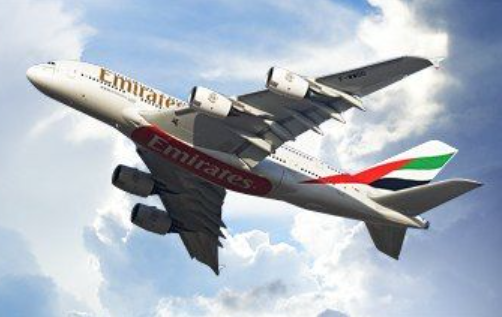No dramas for aircraft leasing funds – Doric Nimrod Air One through Three published their annual reports last night and Amedeo Air Four published its quarterly report.
Doric Nimrod Air One is the simplest of the four funds. It purchased one asset, an Airbus A380-861, in December 2010 which it leased to Emirates. A $122m senior secured finance facility provided by Westpac helped, along with the proceeds of its initial equity issue, pay to buy the plane. Doric Nimrod Air One entered into a lease with Emirates for an initial term of twelve years, with fixed lease rentals for the duration. The debt portion of the funding is paid off gradually (amortised) over the 12-year term of the lease, with the aim of leaving the aircraft with no debt at the end of the twelve year period when the lease is up.
Doric Nimrod Air One targets distributions of 2.25 pence per share per quarter, equating to 9 pence per share per annum. The lease payments received from Emirates cover repayment of the debt as well as income to pay operating expenses and dividends to shareholders. Emirates bears all costs (including maintenance, repair and insurance) relating to the Airbus A380-861 aircraft during the lifetime of the lease. The other three funds are a variation on that theme – with more planes and, in Amedeo’s case, some different planes and different airlines.
For the Doric Nimrod funds, the big swing factors are the health of Emirates’ balance sheet (can it afford to keep paying the leases) and the second hand value of the planes (in case Doric Nimrod decides to sell its planes rather than trying to secure new leases for them). Here is what the board had to say on these topics:
“News flow relating to the Airbus A380 has been widespread over the period and the Board keeps a close eye on such developments, receiving regular market updates from Doric and Nimrod. Whilst there has been much negative coverage, the confirmation of a new order from Emirates in February 2018 was accompanied by a public commitment by Airbus to produce the A380 at least for another ten years. This order underlines the importance of the A380 to Emirates business model. With 102 A380s now flying as part of the Emirates fleet, it is a key aircraft and likely is to be so for many years to come. Airbus has also stated that it is confident of further orders for the A380 now that production certainty has been achieved. More recently, news that two A380’s owned by German Funds managed by Dr Peters Group are to be sold for parts is disappointing. Whilst providing a positive result for investors, according to Dr Peters, it is noted that this outcome is the product of unique circumstances that are unlikely to be repeated. More positively, news that a European wet lease specialist, Hi Fly, is planning to start operating at least one second hand A380 represents an important milestone in the model’s lifecycle. Wet leasing typically refers to the provision of aircraft, crew, maintenance and insurance (also known as ACMI) to an aircraft operator. The Company’s remaining lease period, some four years, offers a suitable time horizon in which to assess such market developments.
Emirates posted another year of profitability in the 2017/18 financial year, growing its route network to 157 destinations and adding 17 new aircraft to its fleet – including 8 A380s. Emirates’ global passenger load factor rose by 0.4 of a percentage point in 2017 to 77.5 per cent. All regions except the Middle East experienced an increase in load factor in 2017.
The Board recognises Emirates is the sole lessee of the asset, and in the event that Emirates defaults on the rental payments it is unlikely the Company will be able to meet its targeted dividends or, in the case of ongoing default, continue as a going concern, instead being required to sell its aircraft and distribute the proceeds to investors. We do not believe such a default is likely at this moment in time given the current and historical performance of Emirates and its current financial position.”
Extracts from the manager’s comments
“Emirates recorded its 30th consecutive year of profit with a net result of AED 2.8 billion ($762 million), an improvement of 124% compared to the previous financial year.”
“the decline of the US dollar against currencies in most of Emirates’ key markets… had an AED 661 million ($180 million) positive impact on the airline’s bottom line.”
“Emirates’ balance sheet amounted to AED 127.6 billion (US$ 34.8 billion), an increase of 5 per cent. compared to the previous financial year. Total equity increased by 5.6 per cent. to AED 37.0 billion ($10.1 billion) due to higher profit which was partially offset by dividend payments”
“In April 2018 Tim Clark, president of Emirates, told journalists that Emirates could operate its A380s until the end of their service life, despite the airline’s previous record of phasing out aircraft at an earlier stage”
“As of the end of March 2018, the global A380 fleet consisted of 219 commercially operated planes in service. The 13 operators are Emirates (102), Singapore Airlines (17), Deutsche Lufthansa (14), Qantas (12), British Airways (12), Korean Air Lines (10), Etihad Airways (10), Air France (10), Qatar Airways (9), Malaysia Airlines (6), Thai Airways (6), Asiana Airlines (6), and China Southern Airlines (5). Another four were temporarily parked: two for lease return preparations and two were returned to their lessor. Following its redelivery from Singapore Airlines (SIA) earlier in 2018, the second A380 to come off lease has been placed into temporary storage in France whilst its engines are reportedly on short term leases to Rolls Royce. The number of undelivered A380 orders stood at 108 and no longer includes a six aircraft order from Virgin Atlantic, which has been cancelled after the delivery was postponed multiple times.”
DNA / DNA2 / DNA3 / AA4 : No dramas for aircraft leasing funds
